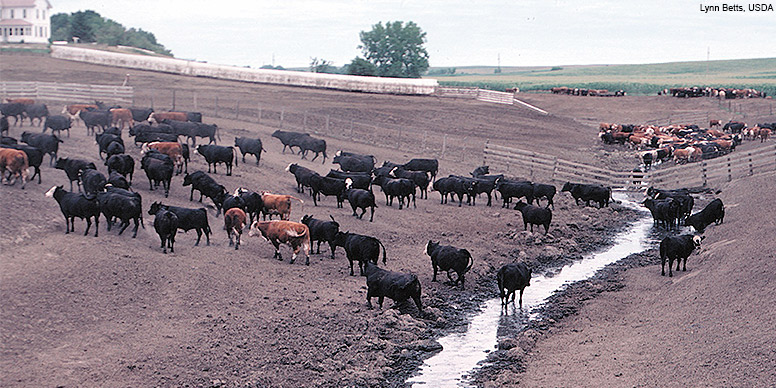Pew Disappointed in EPA Plan to Study Impact of Industrial Livestock Operations on Chesapeake Bay
President Obama Urged to Protect All U.S. Waterways from Animal Waste
"The Obama administration should keep its promise to strengthen rules needed to protect our waterways from animal waste. The time to act is long overdue." -Seth Horstmeyer
The Environmental Protection Agency, or EPA, announced today that it will assess the effectiveness of state efforts to keep livestock waste out of the Chesapeake Bay. The move is intended to resolve a lawsuit (Fowler v. EPA) filed against the agency to more rigorously protect the Chesapeake Bay from pollution. In response, The Pew Charitable Trusts is urging President Barack Obama to fulfill his 2008 commitment to “strictly regulate pollution from large factory livestock farms.”
“Pew is extremely disappointed that instead of strengthening national rules to protect all of our waterways from livestock waste, the EPA is conducting more assessments,” said Seth Horstmeyer, who directs Pew's efforts to reform industrial agriculture. “Small businesses and coastal communities rely on clean water for drinking, food, commerce and tourism. The Obama administration should keep its promise to strengthen rules needed to protect our waterways from animal waste. The time to act is long overdue.”
Pew is advocating for a national rule that requires:
-
More large-scale livestock facilities to obtain and abide by the terms of Clean Water Act permits.
-
Meat and poultry processors to take more responsibility for managing the manure their animals produce.
-
Tracking and regulating the vast amount of waste produced by concentrated animal feeding operations, or CAFOs, but moved off-site.

The Chesapeake Bay Foundation, several former elected officials from Maryland, Virginia, and Delaware, and organizations representing watermen and sports fishermen filed the lawsuit against the EPA in January 2009. As part of the May 2010 settlement, the agency agreed to propose new rules that would increase the number of large livestock operations that would be required to obtain and follow permits under the federal Clean Water Act. The EPA has reported that fewer than 60 percent of CAFOs nationwide are operating under Clean Water Act permits. It also committed to proposing more stringent requirements for the land application of manure, litter, and processing water associated with CAFOs. The original settlement called for a proposal by June 2012. After that deadline was extended into 2013, EPA indicated that it was considering a national rather than a Bay-specific update of CAFO rules.











